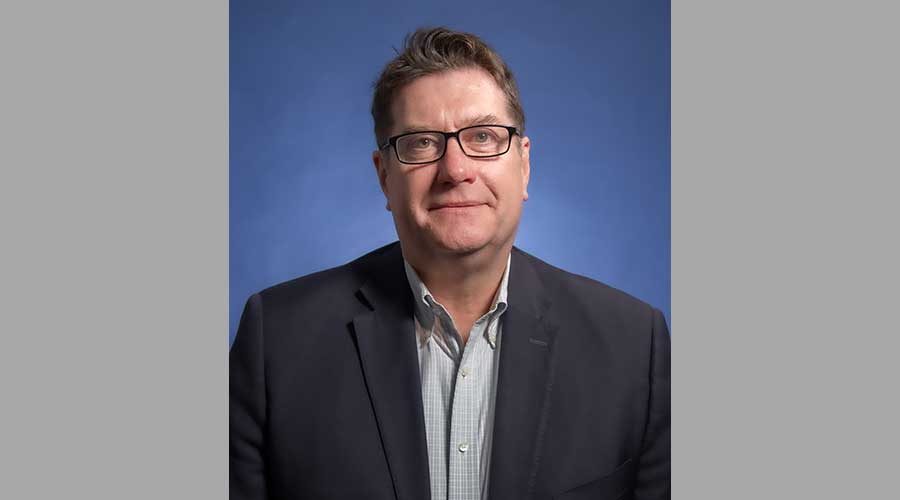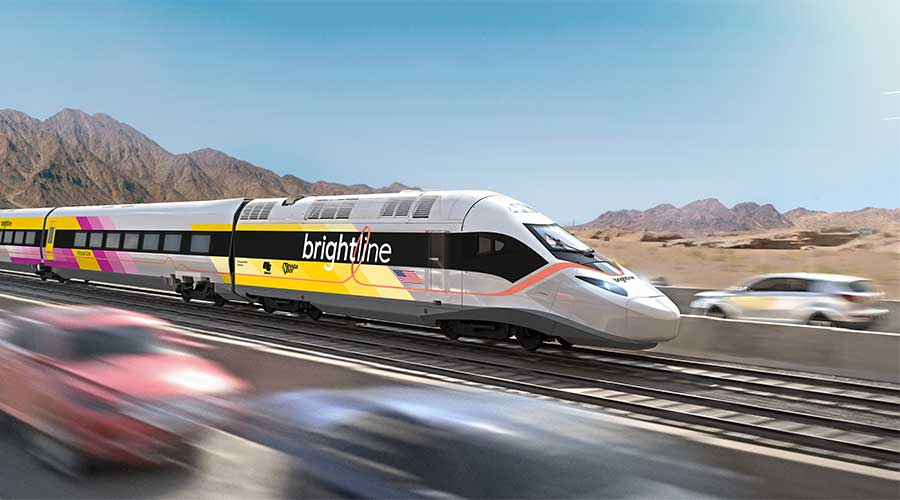Stay updated on news, articles and information for the rail industry
March 2008
Rail News: Passenger Rail
New York City Transit's Road to Reorganization
by Jeff Stagl, managing editor
When Howard Roberts Jr. rides the subway to and from work each day, he makes sure he has a digital camera handy. The president of subway operator MTA New York City Transit (NYCT) photographs items on trains or at stations that need to be corrected. He’s concerned about every imperfection that could get in the way of NYCT serving more than 5 million subway riders daily.
Shortly after taking the reins of the Big Apple’s more than century-old subway system in April 2007, he took a snapshot of another sort. A former transportation consultant, Roberts sized up NYCT’s entire organization — one that also operates a major bus system serving more than 2 million riders daily and employs 47,000 — and came up with a big picture that revealed a major service-impairing flaw.
The New York Metropolitan Transportation Authority agency’s subway division has a “stovepipe” organizational structure that’s poorly integrated because each department functions as a silo, says Roberts. As a result, the world’s second-largest subway system by size and third-largest by ridership is slow to identify and rectify operational shortcomings. For example, it might take a year to repair a broken speaker in one of NYCT’s 468 stations because it takes time for a work order to be drawn up, wind its way through several departments and continue changing hands, says Roberts.
So, he’s trying to decentralize NYCT to create a management structure that functions in unison — and with less bureaucracy — to speed decision-making and work processes.
“The scope of the system is staggering,” says Roberts. “We’re reorganizing to reduce that scale.”
It won’t be an easy or quick fix, not with thousands of managers used to NYCT’s big public agency/silo ways and millions of passengers indifferent about the “same old” subway that hasn’t shown much inclination to change. But over time, employees and riders will be won over by a better-functioning railroad as management layers are removed and passengers’ opinions — something NYCT hasn’t always solicited — become part of the strategy-making fabric, Roberts believes.
First and foremost, the agency plans to assign general managers to oversee each of NYCT’s 26 lines, a process that will take about three years to complete.
Roberts and Steven Feil — who in August 2007 left his COO post at the Washington Area Metropolitan Transportation Authority (WMATA) to join NYCT as chief of operations-service delivery, then became senior vice president of subways in November 2007 — are convinced the agency will be a better service provider by having a GM quarterback each line.
Railroading on a small scale
In late January, while pointing to a system map or an operational report at their lower Manhattan offices — which offer a stunning view of New York Harbor and the Statue of Liberty — Roberts and Feil stressed that by transferring responsibility out into the field, the GMs will take a hands-on approach to subway operations and interface with riders to ensure the agency is meeting their needs.
“They’re managing their own small railroad,” says Feil, who helped WMATA establish the similar role of line director for that agency’s five lines.
For example, instead of dealing with the chief mechanical officer if they encounter an equipment failure, the GMs can work directly with a car shop manager.
“That can save a day depending on the type of failure,” says Feil.
By summer, Roberts & Co. should have a clearer picture how the initial line managers and silo-busting moves are faring.
First in line
In December, NYCT appointed the first two GMs: Lou Brusati, a 27-year subway system veteran, for the 7 Line; and Greg Lombardi, a 28-year NYCT veteran, for the L Line. In addition, the agency named John Hoban deputy GM of the 7 Line and Demetrius Crichlow, deputy GM of the L Line.
For now, Brusati and Lombardi report to Feil. Eventually, NYCT will appoint group managers to oversee and work with three to five GMs.
The agency plans to pilot the GM program on the 7 and L lines — ideal for testing because they don’t share trackage with any other lines — until June, then solicit riders’ feedback on the changes and begin appointing the next round of GMs. Gricelda Cespedes, Herbert Lambert and Joseph Ragusa Jr. already have been identified as candidates.
Roberts and Feil know what it’s like to function in the agency’s large organization because both are in the midst of their second NYCT stint.
From 1981 to 1986, Roberts held such posts as finance and administration vice president, surface transit VP and COO; from 1985 to 1995, Feil first served as superintendent of track construction, then general superintendent of track maintenance/construction.
They’re counting on the reduction in management layers to ensure every employee is working in tandem and the GMs are leading the charge to help NYCT meet its primary goals: seamless operations; reliable transit times; responsive customer service; clean and attractive stations; and a well-maintained, safe and secure system.
The agency continues to struggle to meet some of those targets, Roberts and Feil say.
Maintenance long has been a thorny issue for NYCT, which hasn’t reinvested enough capital over the years to address necessary upgrades and repairs, including the modernization of a century-old signal system, says Roberts. The agency needs to reinvest 4 percent of capital and, at best, reinvests 1 percent, he says.
“We’ve made strides after 50 years of disinvestment, but it could take 70 years to get the system to a state of good repair,” says Roberts. “There’s never enough money to make the great strides needed. We always look to cut down the scope of a project to fit it into available funding, so it’s hard to do what needs to be done.”
Spic and span Roberts has tried to solicit more funds for general maintenance, especially station cleaning, in advance of the reorganization. Last year, he determined stations weren’t as clean or well maintained as they could be because of limited resources. In some cases, one employee was responsible for cleaning five stations during an eight-hour shift, says Roberts.
Last year, NYCT began a pilot program under which the agency hired 313 additional station cleaners (boosting their ranks to 1,430) and changed cleaning processes so one employee isn’t responsible for numerous stations.
“If we find the resources, we’ll add more station cleaners in 2008,” says Roberts.
Now, the GMs are charged with getting the most bang out of the additional cleaning bucks. Brusati is working with his cleaners to ensure the 7 Line’s 21 stations are up to snuff, as are the cars serving his line.
During his first two months on the job, he’s spent time assessing stations to develop a “wish list” of needed improvements and prioritize work, says Brusati, a NYCT employee since 1981 who most recently served as general superintendent in rapid-transit operations.
The 19-mile 7 Line, which runs between Queens’ Flushing section and Times Square, averages 450 train trips and 394,000 passengers daily — enough riders to rank as the nation’s fifth-busiest rapid-transit line, besting daily ridership in Atlanta, Los Angeles, Philadelphia and San Francisco.
Brusati knows it’ll be a challenge to keep up with the line’s needs and manage the more than 2,500 employees that work under him.
He believes it’ll take six months to put all the necessary elements in place to make the 7 Line a smooth-running operation.
“It’s a seven-day-a-week job,” he says. “I’m trying to make sure the employees are on board and we’re serving customers, and we build the confidence level on both sides of the house.”
Everyone on board
It doesn’t hurt that the line’s work processes are speeding up with Brusati at the helm.
Instead of waiting a week to receive a new train key, workers are getting them in one day, he says. In addition, track workers recently experienced a rarity: a 7 Line maintenance-of-way project completed several weeks ahead of schedule.
The second phase of a $76 million capital program aimed at modernizing the line’s signal system and reconfiguring track switches, the project began in mid-January and concluded in mid-February.
The line’s express service between Times Square and Main Street was suspended on Jan. 11 because of the project and had been scheduled to resume March 3. Instead, the service was restored Feb. 19.
The project was finished ahead of time because track could be shut down completely for a period, work was better coordinated and crews encountered better-than-expected weather, says Brusati.
The coordination and track shutdown proves the GM/teamwork concept is sound, he says.
“We’re all together on the same page and everyone’s committed to doing things the same way — before, we were disjointed,” says Brusati. “Now, support trickles down in the organization and we build on each other’s knowledge.”
More open lines of communication are key, says Brusati. Shortly after rejoining NYCT late last year, Feil implemented a daily conference call to ensure every department remains on the same page. Held every weekday at 7:15 a.m. and later on weekend mornings, the call is attended by all department managers, including Brusati and Lombardi.
The idea: prevent managers from receiving secondhand or conflicting information on operations.
“We discuss the health of the system,” says Feil. “I want everyone to get the right information in real time.”
Seeing is believing
The information sharing and organizational moves are paying off for 7 and L line riders, who are gaining cleaner stations and a management presence on and around platforms, and boarding more on-time trains, says Feil.
Brusati is making his presence known on the 7 Line by conducting meet-and-greets with riders. He wears an “ask me” button to welcome passengers’ questions.
“The visibility is critical,” says Brusati. “It’s important that the customers see us out there.”
In spring, Roberts and Feil plan to gauge passengers’ reactions to and the outcome of the GM pilot by handing out rider report cards along the 7 and L lines.
Last summer, Roberts instituted NYCT’s first-ever rider report card — a process he counted on to obtain valuable feedback while serving as Southeastern Pennsylvania Transportation Authority’s deputy general manager in the 1990s — on the 7 Line. The agency later handed out cards on the L and other lines.
Distributed as a self-mail card in 13 languages and also accessible on New York MTA/NYCT’s Web site, the report card enables riders to grade 21 service areas from an “A” (for excellent) to an “F” (for unsatisfactory).
“Passengers say they’ve never been asked about their opinions before,” says Roberts.
Out of more than 88,000 report cards handed out on the 7 Line during a three-day period in July, nearly 16,000 passengers turned in cards (more than 11,000 by mail and more than 4,000 online).
The respondents gave the line an overall C- grade and cited “adequate room on board at rush hour,” “minimal delays during trips” and “reasonable wait time for trains” as the top three service aspects needing improvements.
Tuned in to a new frequency
Although NYCT’s subway ridership has increased 12 percent the past five years — and in 2007 alone rose 4.2 percent from 2006’s level to 1.6 billion, the highest count since 1951 — the agency hasn’t added a lot more trains to accommodate the influx of passengers, says Roberts. However, results of the 7 and L line rider report cards, which cited adequate room on board at rush hour as the top need, did prompt NYCT to increase service frequency on both lines in December. Since 1998, ridership on the L and 7 lines has shot up 48 percent and 26 percent, respectively.
The 7 line now features morning rush-hour service beginning at 7:10 a.m. and ending at 9:05 a.m. vs. the previous 7:20 a.m. start and 8:50 a.m. finish. The L Line now offers 23 more round trips on weekdays, 30 more on Saturday and 34 more on Sunday.
And more trains are on tap for the 7 and L lines as the GMs continue to implement processes to maintain or boost on-time performance, such as trying to better manage the “one to two minutes of lateness” caused by unexpected but preventable glitches, says Brusati.
This year, NYCT plans to add weekend service on the 7 and more rush hour, weekday off-peak and weekend service on the L. The agency also will increase evening service on the 1, 4, 5 and 6 lines, rehabilitate five stations and renovate another five to be accessible to disabled persons.
No. 1 challenge: capacity
However, there’s only so much NYCT and the GMs can do to increase service frequency and expand capacity to accommodate increasing ridership, says Roberts.
The subway system needs more capacity because on-time performance averages 95 percent to 98 percent on some lines, but hovers in the mid-80 percentage range on others that are more congested. Yet, two of the three best options to expand capacity are expensive, says Roberts.
The least expensive is changing operations to eliminate bottlenecks. The most expensive is increasing platform lengths to accommodate 10-car trains, as NYCT has done at a number of stations, says Roberts. In between is implementing communications-based train control (CBTC), which has been installed on the L Line.
“We’re not taking full advantage of the options, yet our ridership is exploding,” says Roberts. “I believe in five years we can get a 50 percent boost in capacity by using a combination of the three [options]. The challenge is to identify the resources to do it.”
For now, NYCT will rely on Brusati and Lombardi — and, soon, other line GMs — to find ways to better manage the capacity they have.
Fleeting moment
Getting their hands on several new passenger cars will at least accommodate a few more riders in the near term.
NYCT is taking delivery of new R160 cars, which have more seating capacity and provide more modern amenities than the 40-year-old cars they’re replacing.
The agency has a base order for 660 R160s with Alstom Transport and Kawasaki Rail Car Inc. and the final 198 cars are scheduled to be delivered by May’s end. The cars will be used on the J, Z, L, M, N and Q lines.
The R160s feature bright interiors, digitized voice announcements, airbag suspensions and advanced climate-control systems.
The cars also include flexible information and display, or FIND, systems, featuring a video screen display that scrolls through station names as a train passes each stop and a visual map that can display a different line if a train changes route mid-run.
NYCT is exercising the first of two options for 620 additional R160s and might exercise the second in November for another 380 cars, says Gene Sansone, assistant chief mechanical officer-car equipment engineering and technical support.
NYCT’s fleet, which currently stands at 6,400 cars, soon will include more CBTC systems. The agency plans to install CBTC on cars serving Brusati’s 7 Line, which will begin using the communications-based system, says Sansone.
A world of possibilities
NYCT also is analyzing lightweight composite flooring and more solid-state door controllers for the car fleet, and changing air-conditioning compressors to reduce energy consumption, he says.
In addition, the agency is installing closed-circuit TV systems on some cars to record activity on trains and at stations. The recordings could be used during accident investigations, says Sansone.
When you operate a subway system in one of the world’s largest cities, there’s activity 24/7. Millions of people count on the subway to get around the Big Apple morning, noon and night. It’s a role NYCTers understand and embrace.
“You have to have vitality in this city and the subway is part of that vitality,” says Brusati.
Continuing to assign more GMs, remove management layers and poll riders will help ensure the subway remains a key and valuable asset to New Yorkers, Roberts and Feil say. And a public transportation system that more than adequately serves the public.
“We know what customers are looking for,” says Feil. “What we’re driving here is integration, to eliminate our stovepipe structure and break the railroad into manageable pieces. This is the way to do it.” 
‘Reefing’ cars reaps its own rewardsMTA New York City Transit has defined “reorganization” as establishing a roster of line general managers to create a less-bureaucratic management structure. When it comes to characterizing its strategy for disposing of old subway cars, the agency uses the term “reefing.” NYCT provides outdated stainless steel cars to numerous states to use as artificial reefs near the Atlantic Ocean shoreline. Stripped to their shells, the cars are dropped into the water in small groups 10 to 40 miles offshore, where they sink to the ocean bottom and — within months — attract marine life. Ocean-growing plants eventually cover the car shells, and sea turtles and fish use them as a home. “The bottom of the ocean is like a desert,” says Mike Zacchea, NYCT’s assistant chief operations officer-asset recovery/material division, adding that the car shells help restore life to the ocean floor. The agency started reefing old cars in 2000, providing 1,269 shells of carbon steel “Redbird” cars to Delaware, Georgia, New Jersey, South Carolina and Virginia. NYCT removes all components and materials, including the trucks, and plastics and fiberglass, and scrubs the shells with a biodegradable cleaner before giving the cars to states. The shells degrade naturally over time. This month, NYCT is launching its second reefing program, which will involve 1,662 old stainless steel cars. The agency provides the cars to states free of charge and covers the cost to transport them to coastal locations. Despite collecting no money for the shells, NYCT has found reefing the cars is cheaper than scrapping them because asbestos needs to be abated a certain way before any car hits the scrap heap, says Zacchea. “It would cost us $43 million to abate all the old cars,” he says. “It will cost us $22 million to reef them.” For various states, the cars are a cheap artificial reef option that are paying big dividends for ocean life. “They’re exceeding the expectations of reef managers,” says Zacchea. — Jeff Stagl |
Keywords
Browse articles on New York City Transit NYCT decentralize NYCT NYCT reorganizationContact Progressive Railroading editorial staff.


 2025 MOW Spending Report: Passenger-rail programs
2025 MOW Spending Report: Passenger-rail programs
 Gardner steps down as Amtrak CEO
Gardner steps down as Amtrak CEO
 Guest comment: Oliver Wyman’s David Hunt
Guest comment: Oliver Wyman’s David Hunt
 Women of Influence in Rail eBook
Women of Influence in Rail eBook
 railPrime
railPrime








